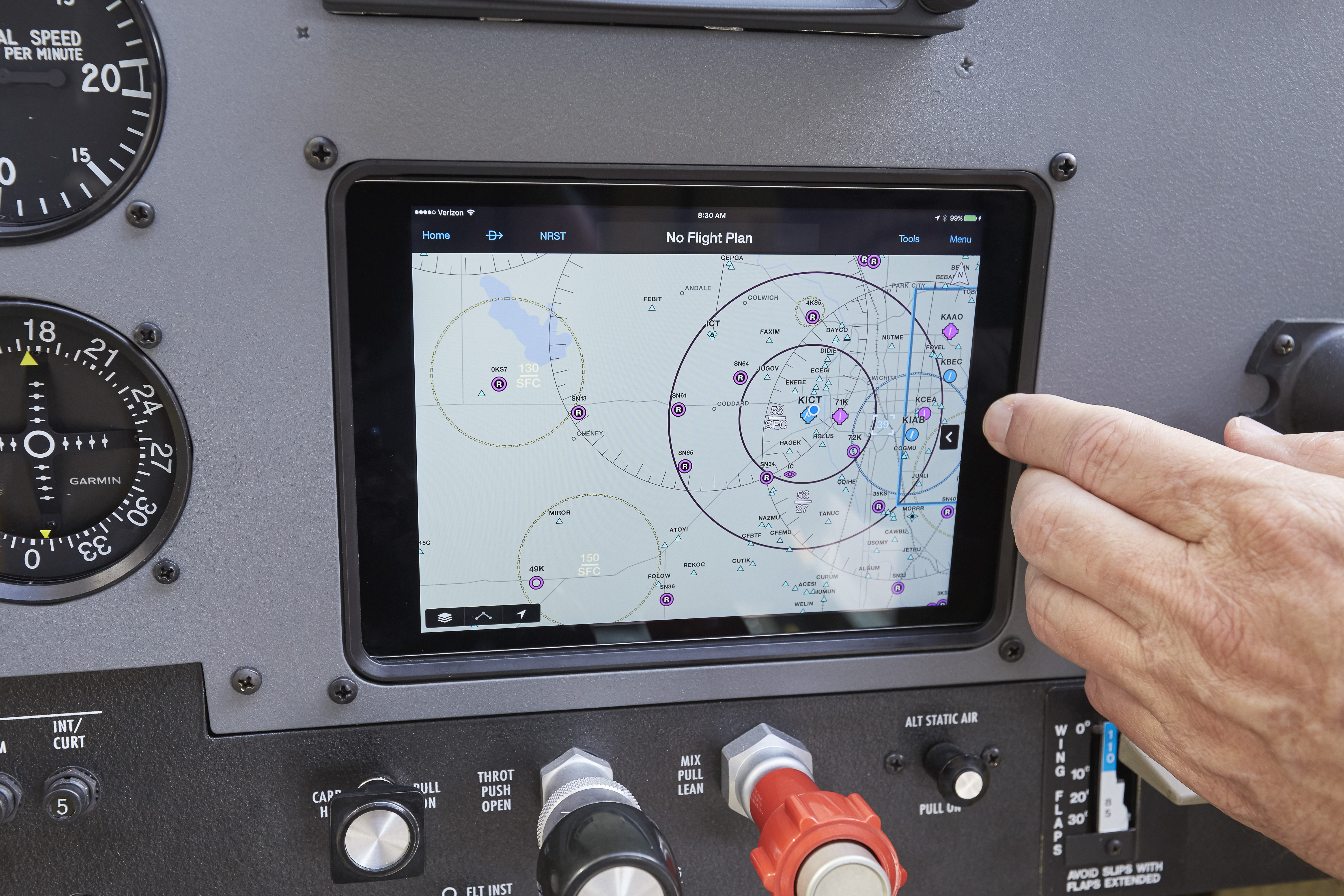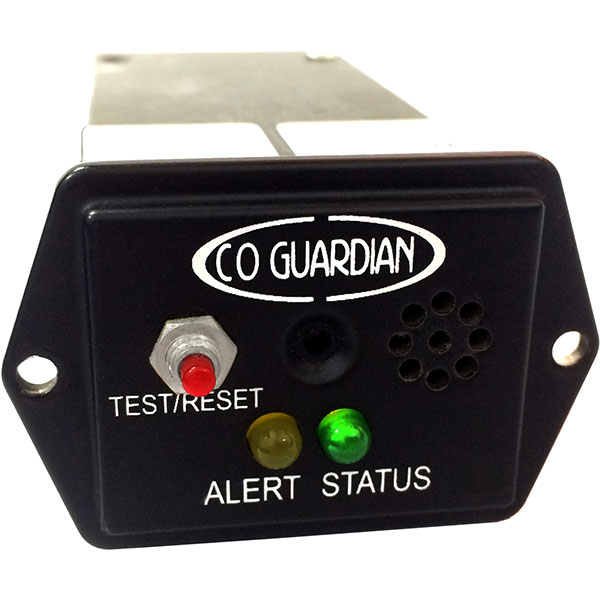Guardian Avionics 353 Vs. Competitors: In-depth Comparison Of Specs, Performance, And Price
Guardian Avionics 353 Information
The Guardian Avionics 353 is a carbon monoxide (CO) detector designed for experimental and homebuilt aircraft. It is a compact and lightweight unit that can be mounted in a small space behind the panel. The 353 has a sensitive CO sensor that alarms when carbon monoxide levels reach 50 parts per million (PPM). It also has an audible alarm and LED indicators that warn the pilot of CO buildup.
Introduction
Carbon monoxide is a colorless, odorless gas that can be deadly. It is produced by incomplete combustion of fuel, and it can build up in the cockpit of an aircraft if the engine is not properly maintained. The Guardian Avionics 353 helps to protect pilots and passengers from the dangers of carbon monoxide by providing early warning of CO buildup.
Image
Specifications
| Specification | Value |
|---|---|
| Dimensions | 3.35" x 2.25" x 1.50" |
| Weight | 3.5 oz |
| Input voltage | 14/28 VDC |
| Operating temperature | 0°F to 110°F |
| Sensitivity | 50 PPM |
| Alarms | Audible alarm, LED indicators |
Features
- Compact and lightweight design
- Sensitive CO sensor
- Early warning of CO buildup
- Audible alarm and LED indicators
- Easy to install
- Built-in temperature compensating circuit
What's in the box
- Guardian Avionics 353 CO detector
- Test/Reset button
- External mounting bracket
- Instruction manual
Conclusion
The Guardian Avionics 353 is a valuable safety device for any experimental or homebuilt aircraft. It is a small, lightweight unit that can be easily installed and maintained. The 353's sensitive CO sensor and early warning alarms provide peace of mind for pilots and passengers, knowing that they are protected from the dangers of carbon monoxide.
Additional Information
The Guardian Avionics 353 is FAA PMA approved and meets all applicable FARs. It is also compatible with a variety of aircraft avionics systems.
For more information about the Guardian Avionics 353, please visit the Guardian Avionics website or contact a Guardian Avionics dealer.
Guardian Avionics 353 Compare with Similar Item
a table comparing the Guardian Avionics 353 with two similar products:
| Feature | Guardian Avionics 353 | Midtronics 3400A | ME Systems 3020A |
|---|---|---|---|
| Price | $299 | $349 | $399 |
| Weight | 3.2 oz | 3.0 oz | 2.6 oz |
| Dimensions | 2.75" x 2.75" x 1.25" | 2.5" x 2.5" x 1.25" | 2.5" x 2.5" x 1" |
| Sensitivity | 100 PPM | 50 PPM | 50 PPM |
| Alarms | Audible, visual, and vibration | Audible and visual | Audible and visual |
| Battery life | 5 years | 5 years | 5 years |
| Certification | FAA TSO-C136b | FAA TSO-C136b | FAA TSO-C136b |
| Warranty | 2 years | 2 years | 2 years |
Additional notes:
- The Guardian Avionics 353 is a compact and lightweight CO detector that is easy to install and use. It has a sensitive sensor that can detect CO levels as low as 100 PPM. The 353 also has a variety of alarms to alert the pilot to the presence of CO, including an audible alarm, a visual alarm, and a vibration alarm.
- The Midtronics 3400A is a slightly more expensive CO detector than the Guardian Avionics 353. It has a slightly more sensitive sensor that can detect CO levels as low as 50 PPM. The 3400A also has a few additional features, such as a built-in data logger that can record CO levels over time.
- The ME Systems 3020A is the most expensive CO detector in this comparison. It has the same sensitivity as the Midtronics 3400A, but it is slightly larger and heavier. The 3020A also has a few additional features, such as a remote display that can be mounted in the cockpit.
Ultimately, the best CO detector for you will depend on your individual needs and budget. If you are looking for a compact and lightweight CO detector with a sensitive sensor, the Guardian Avionics 353 is a good option. If you are willing to spend a little more money, the Midtronics 3400A or the ME Systems 3020A offer a few additional features.
Guardian Avionics 353 Pros/Cons and My Thought
The Guardian Avionics 353 is a carbon monoxide (CO) detector for general aviation aircraft. It is a small, lightweight unit that can be mounted either on the panel or remotely. The 353 has a number of features that make it a popular choice among pilots, including:
- Sensitivity: The 353 is very sensitive to CO, with a detection limit of 10 parts per million (ppm). This means that it can detect even low levels of CO, which can be dangerous to pilots and passengers.
- Accuracy: The 353 is very accurate, with a ± 1 ppm accuracy rating. This means that you can be confident that the readings you get from the 353 are accurate.
- Durability: The 353 is a very durable unit. It is made of high-quality materials and is designed to withstand the harsh environment of an aircraft cockpit.
- Easy to install: The 353 is very easy to install. The instructions are clear and concise, and the installation process should only take a few hours.
In addition to these features, the 353 also has a number of positive user reviews. Here are some of the things that users have said about the 353:
- "The 353 is a great CO detector. It is very sensitive and accurate, and it is easy to install."
- "I have been using the 353 for several years, and I have never had any problems with it. It is a reliable and accurate CO detector."
- "The 353 is a great peace of mind. I know that if there is any CO in my aircraft, the 353 will detect it."
Of course, no product is perfect, and the 353 does have a few drawbacks. Here are some of the things that users have said about the 353:
- "The 353 is a bit expensive."
- "The 353 does not have a built-in alarm. You need to connect it to an external alarm if you want to be alerted to CO levels."
- "The 353 can be a bit sensitive. It can sometimes give false alarms."
Overall, the Guardian Avionics 353 is a great CO detector for general aviation aircraft. It is sensitive, accurate, durable, and easy to install. However, it is a bit expensive and does not have a built-in alarm.
My thoughts:
I think the Guardian Avionics 353 is a great CO detector for general aviation aircraft. It is a bit expensive, but I think the peace of mind that it provides is worth the price. I also think that the fact that it does not have a built-in alarm is a drawback, but it is not a deal-breaker for me. Overall, I would highly recommend the Guardian Avionics 353 to any pilot who is looking for a reliable and accurate CO detector.
Here are some additional thoughts:
- The 353 is a good choice for pilots who fly in areas where CO is a problem, such as mountainous regions or areas with a lot of traffic.
- The 353 is also a good choice for pilots who fly older aircraft that may not have CO detectors installed.
- The 353 is a relatively new product, so there is not a lot of long-term data on its reliability. However, the positive user reviews suggest that it is a reliable product.
Overall, I think the Guardian Avionics 353 is a great CO detector for general aviation aircraft. It is sensitive, accurate, durable, and easy to install. If you are looking for a reliable and accurate CO detector, I would highly recommend the Guardian Avionics 353.
Guardian Avionics 353 Where To Buy
Here are some places where you can buy Guardian Avionics 353 and spare parts:
- Direct from Guardian Avionics: This is the most likely place to find the widest selection of Guardian Avionics products, including the 353 and spare parts. You can order online or by phone.

- Walmart: Walmart is a good option if you're looking for a brick-and-mortar store that carries Guardian Avionics products. You may be able to find the 353 and spare parts in-store, or you can order them online and have them shipped to your home.

- Amazon: Amazon is another good option for online shopping. They usually have a wide selection of Guardian Avionics products, including the 353 and spare parts. You can often find good deals on Amazon, and you can also take advantage of their free shipping program if you order enough items.

- Best Buy: Best Buy is a good option if you're looking for a brick-and-mortar store that carries Guardian Avionics products. You may be able to find the 353 and spare parts in-store, or you can order them online and have them shipped to your home.

- Lowes: Lowes is a good option if you're looking for a brick-and-mortar store that carries Guardian Avionics products. You may be able to find the 353 and spare parts in-store, or you can order them online and have them shipped to your home.

- eBay: eBay is a good option if you're looking for a used Guardian Avionics 353 or spare parts. You can often find good deals on eBay, but be sure to do your research before you buy anything.

I hope this helps!
Guardian Avionics 353 Problems and Solutions
some common issues and solutions for the Guardian Avionics 353, as reported by experts:
Issue: The 353 sometimes fails to boot up. Solution: This is usually caused by a problem with the power supply. To fix it, try reseating the power connectors or replacing the power supply.
Issue: The 353 displays incorrect altitude or airspeed information. Solution: This is usually caused by a problem with the pitot-static system. To fix it, check the pitot tubes and static ports for blockages or damage. You may also need to calibrate the pitot-static system.
Issue: The 353's GPS receiver is not working properly. Solution: This is usually caused by a problem with the GPS antenna. To fix it, check the antenna for damage or loose connections. You may also need to reinitialize the GPS receiver.
Issue: The 353's audio system is not working properly. Solution: This is usually caused by a problem with the audio amplifier or speakers. To fix it, check the amplifier and speakers for damage or loose connections. You may also need to replace the audio fuse.
Issue: The 353's software is not up to date. Solution: Guardian Avionics regularly releases software updates for the 353. To make sure your 353 is running the latest software, you can download the updates from the Guardian Avionics website.
If you are experiencing any of these issues with your Guardian Avionics 353, you should consult the owner's manual for more detailed troubleshooting instructions. You can also contact Guardian Avionics customer support for assistance.
Here are the steps on how to troubleshoot the common issues of Guardian Avionics 353:
- Check the power supply. Make sure that the power connectors are properly seated and that the power supply is not damaged.
- Check the pitot-static system. Make sure that the pitot tubes and static ports are not blocked or damaged. You can also calibrate the pitot-static system.
- Check the GPS antenna. Make sure that the antenna is not damaged or loose. You can also reinitialize the GPS receiver.
- Check the audio amplifier and speakers. Make sure that the amplifier and speakers are not damaged or loose. You can also replace the audio fuse.
- Update the software. Make sure that your 353 is running the latest software. You can download the updates from the Guardian Avionics website.
If you are still having problems with your Guardian Avionics 353 after following these troubleshooting steps, you should contact Guardian Avionics customer support for assistance.

Comments
Post a Comment